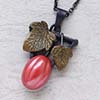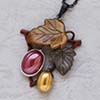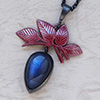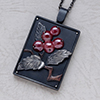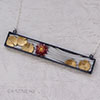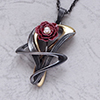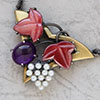1. Prepare some borax solution
Mix 800cc water and borax until it comes up to the saturation point.
In this video I use the remain of the borax that I used last time and add some new one seeing the saturation.
They say 25% is good. Find your best density.
2. While you wait for the solution to boil up, polish your copper piece.
Usually you can use a buffer but in this case I polish it by hand with kitchen detergent powder because I want to keep clear texture.
Of course the piece should be pickled cleanly previously.
3. Heat the copper piece on a stainless steel net until it becomes shiny orange.
The red patina is a kind of oxidized copper that is created under the temp around 1000C.
The melting temp of copper is 1085C. It means you need to heat it up almost to melting temp.
4. Then throw it into the borax solution quickly.
And wait until the bubbles to calm down.
5. Getting red color is easy but it's accidental what red color you get.
If you don't like the color you've got, pickle the piece and start again from polishing.
6. After you did the patina process, polish it slightly.
You can use a buffer or a motor tool as long as you don't polish it too much and wipe out the patina.
In this video I polish it with some polishing paste and a cotton stick because I need to polish between veins.
7. The patinaed piece cannot be soldered anymore. You should plan how you fix it mechanically previously.
8. You will see more examples of this technique in my shop

